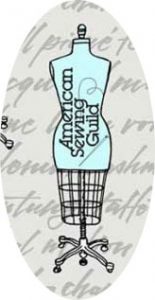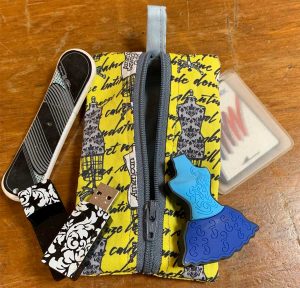An Advent calendar with pockets that holds cards suggesting the day’s special activity or a special treat is a popular tradition with children of all ages. The first Advent calendars originated as early as the 19th century and was used to mark the countdown in December to Christmas. Advent calendars are 24 or 25 days beginning December 1 and ending December 24 or 25. ASG member, Sara Scheil, shared the instructions for one she made one for her children.
Materials
- 21″ x 36″ piece of sturdy fabric (quilted fabrics work well for this)
- 6″ – 10″ of solid color coordinating fabric. A fabric with body will work best.
- 21″ of 3/8″ wood doweling
- Approximately 30″ of cord or fabric tube for a hanger
- Card stock and fabric paint in contrasting color
Instructions
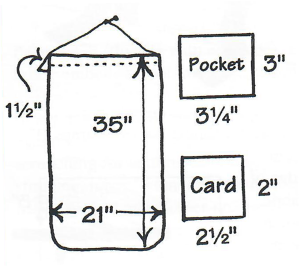 Edge finish the quilted fabric on all sides (serge with a overlock stitch or bind with a narrow bias tape).
Edge finish the quilted fabric on all sides (serge with a overlock stitch or bind with a narrow bias tape).
Fold down the top edge 1″ and stitch along the edge to form a casing for the dowel rod. Include the cord or fabric tube used for the hanger in this stitching by positioning the ends at each outer edge on the underside of the calendar.
On the solid colored fabric, using a ruler and fabric marker or chalk pencil, draw lines to make the pocket rectangles 3″ high and 3 1/4″ wide. Edge finish with the serger using a narrow stitch such as a rolled hem. Pinking the edges could be a substitute. Make 25 rectangles for the pockets.
On each pocket, paint, embroider, or applique the numbers 1 through 25 for the days of the calendar.
Optional: You may wish to title your calendar. Consider painting the words “Advent Calendar” on a rectangle approximately 3″ high and at least 12″ long of the solid fabric. Edge finish and topstitch on the upper 4″ space of the calendar.
Layout the 25 pockets on the calendar using the suggested measurements as a guide. Secure with washable glue stick. Let dry. Top-stitch the 3 sides of each rectangle by stitching each row with a continuous vertical and horizontal stitching line. Day 25 will be done separately in a “U” shape, of course.
Cut card stock into pieces 2″ high and 2″ wide. On the cards, record activities that your family enjoys or that are important to you during this season. Alternatively, you can include small gifts or candies in each pocket.
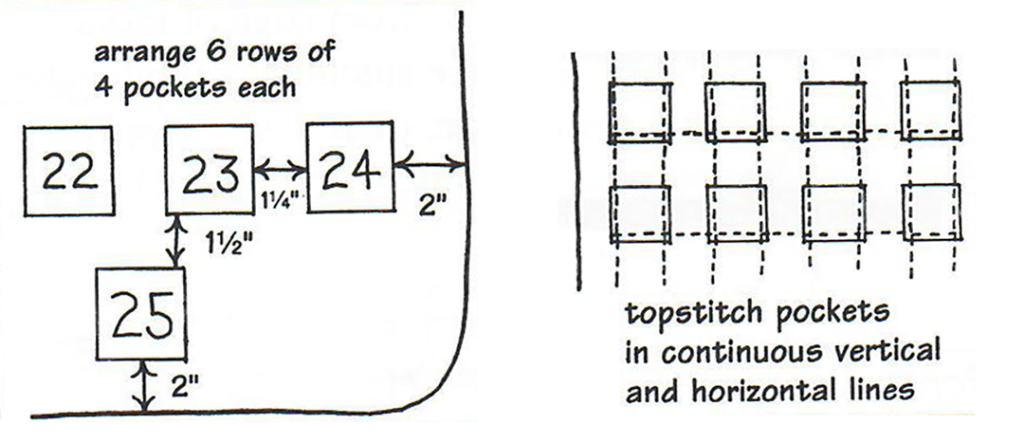 Card/Pocket Ideas
Card/Pocket Ideas
- Play Christmas music
- Put up the Christmas tree
- Drive around to see the lights and decorations
- Make Christmas cookies
- Read the Christmas story
- Look at photos from previous Christmas seasons
- Hang stockings
- Visit Santa
- Special treat
- Craft supplies
- Pieces of a larger toy set given in a few pieces each day (LEGO’s are great for this)
- Chocolates
- Small jewelry or accessory items
Sara shares that her children would race to the calendar each morning to read the card. The surprise of what the day’s activity would be was very exciting. Seeing what day of the month it was not only taught them about the calendar sequence but avoided repetitive questions about when Christmas would be here. The activities they chose encouraged family togetherness and reminders of the meaning of the holiday.
~ This project is adapted from an article by Sara Scheil published in a previous issue of Notions.





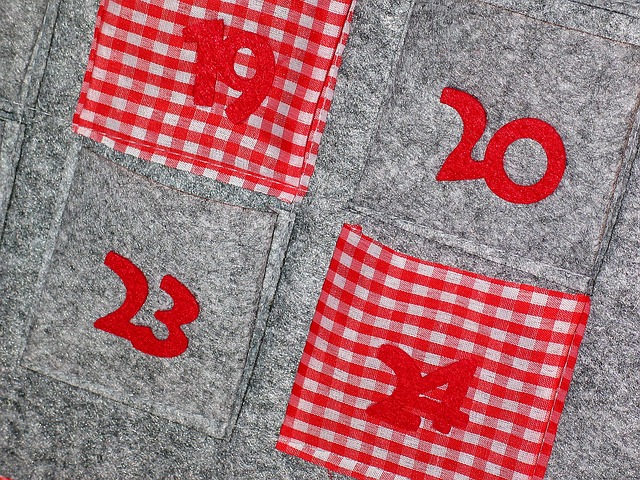
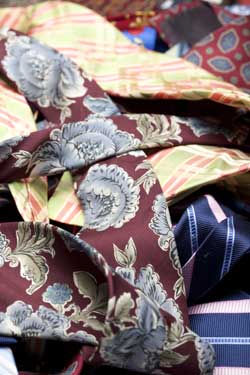
 Since I love making purses, I decided to go in that direction. The deconstructed tie yielded a piece of fabric that was 7 ½ inches at its widest point. I took two foundation pieces of fabric and laid the wide points of the ties centered on the foundation. Then I played with the remaining pieces and tried to match the swirls of color on either side of the main sections. Luckily the ties were close enough to being identical that I was able to get both the front and back to look similar. But how could I attach the pieces and make them look attractive and not just patched?
Since I love making purses, I decided to go in that direction. The deconstructed tie yielded a piece of fabric that was 7 ½ inches at its widest point. I took two foundation pieces of fabric and laid the wide points of the ties centered on the foundation. Then I played with the remaining pieces and tried to match the swirls of color on either side of the main sections. Luckily the ties were close enough to being identical that I was able to get both the front and back to look similar. But how could I attach the pieces and make them look attractive and not just patched?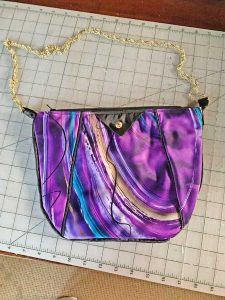

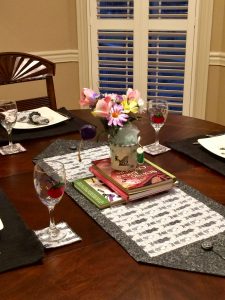

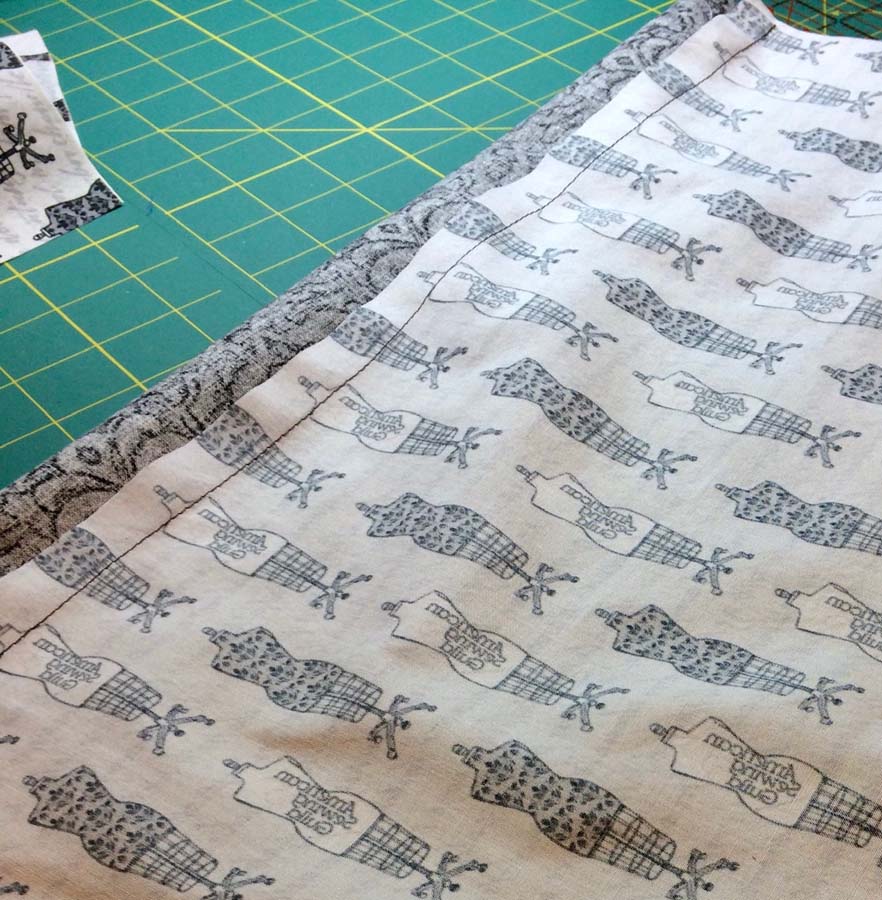
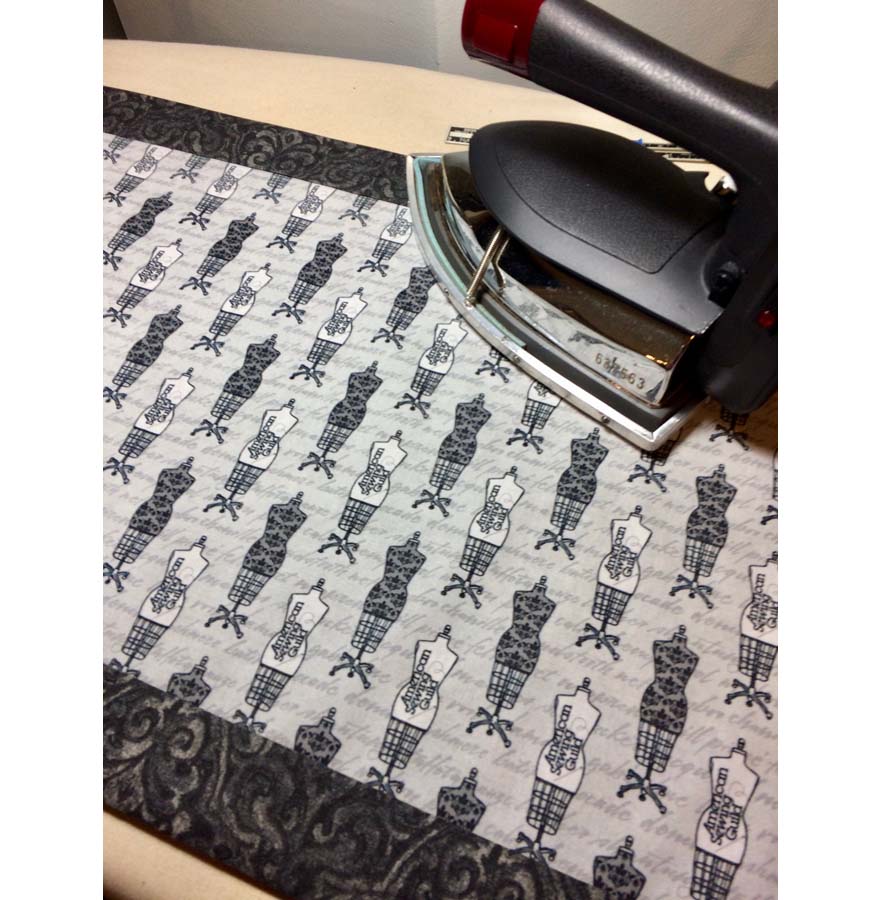
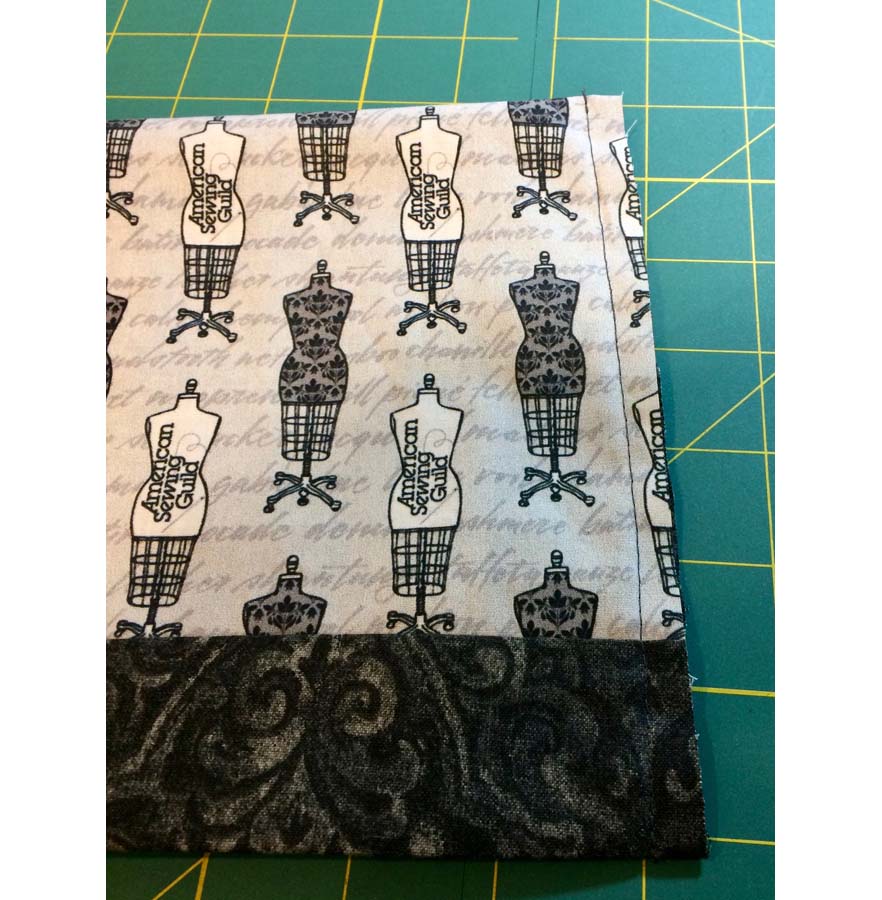


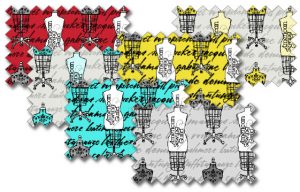 What have you been making from our ASG fabric? We are currently looking for original designs that our members created from our very own unique fabric—the one with the dress forms and the ASG logo.
What have you been making from our ASG fabric? We are currently looking for original designs that our members created from our very own unique fabric—the one with the dress forms and the ASG logo.